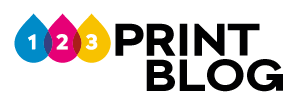 Have you ever signed up for a seminar, conference, or local chamber event, and done absolutely nothing to prepare for the networking opportunity? You’re not alone. We often attend events knowing that we want to hear what the speakers have to say, and we completely forget about the marketing opportunity inherent in the event. Well no more!
Have you ever signed up for a seminar, conference, or local chamber event, and done absolutely nothing to prepare for the networking opportunity? You’re not alone. We often attend events knowing that we want to hear what the speakers have to say, and we completely forget about the marketing opportunity inherent in the event. Well no more!
The first obvious thing to do, is to take an inventory of your business card supply. You might even want to upgrade your cards to a new finish or style. A heavier-weight paper stock or glossy coating might help you stand out. Raised ink business cards can raise the professionalism as well. But having enough of the right business cards is the minimum you need to do.
Here are 7 steps to make the most of your next networking event:
1. Set Goals
If you don’t know what you’re trying to accomplish, you’ll accomplish nothing. I guess you could say that you would be meeting your goal, but not a goal you really want to meet! Perhaps you want to make five new potential customer contacts, or three new vendors from a certain industry or geographic territory. Another objective could be to hand out 50 business cards. Setting up follow-up appointments with four new contacts would be a great plan. Rather than have a loose idea of what you’d like to accomplish, i.e. meet potential customers and vendors, set measurable goals.
2. Do Your Research
With goals in mind, it’s time to begin your research. Start by getting a list of event attendees. The event sponsor may be willing to provide the list, or if you’re lucky, they’ll publish it on the event’s website. Since you won’t have time to meet with everyone, narrow down the list based on your goals. Then see what you can find out about each participant you’re targeting. Do they have a LinkedIn profile, blog and/or twitter account? Learn what you can about them to help refine your target list and to better plan your conversation with them.
3. Document What You Learned
This is where you put your research to work. Whether you want to create a list to review on your smartphone or tablet or you’d feel more comfortable with “old school” index cards, the format is up to you. The documentation should be the same. Include the person’s name, title, business, a photo if you can find it, a note or two from having scanned their latest blog or social posts, and most importantly, what you hope to accomplish by introducing yourself to this person. Doing this will make your networking more effective and efficient.
4. Refine Your Elevator Pitch
Time is usually precious during a networking opportunity. Either you’re in between sessions or at a meal and there are lots of people trying to network. Know what you want to communicate about yourself and your company. Since you already know the people you want to connect with, think through how you might want to tweak your message to best impress and interest them. Practice your 30-second elevator pitch.
5. Listen More than You Talk
Yes, you need to have your elevator pitch ready, but don’t ramble on about yourself or your company (unless the other person seems truly interested and is asking questions). Ask your own open-ended questions, keeping in mind why you chose this person to network with at the event. By getting the person talking, you’re more likely to find common ground and create a connection. Tip in where you can answer their questions and be helpful, even offer to introduce them to other contacts who have similar interests or issues.
6. Make Notes
After the discussion, jot down conversation highlights in your smartphone or on your index cards. Record everything from the event date, name and location (which might seem obvious at the time, but when you look back later you may be glad to have the reminder). Include personal info like kids’ and spouse’s names or hobbies. Of course you’ll also want to note interests you have in common, projects you might be able to collaborate on, and something that will help you remember them. That could be a physical thing like a scar, tattoo, expensive shoes, or something unique that they told you that you will always associate with them. Maybe noting where you had the discussion, like at a conference break next to the cupcake display, will be the trigger you need.
7. Follow Up
You’ve planned ahead and done your research, you found the right people at the event and made notes about your conversations, and that’s all great. But if you don’t follow up, it was all a waste of time. Depending on your pre-event goals, you may already have some meetings set up, but in those cases where you don’t, reach out to your new contacts. Keep the follow-up low-key by sending an email three to five days after the event — unless you really connected and a phone call won’t seem like you’re stalking them. In your email, remind them where you met and what you talked about, and thank them for their time at the event. Share any new information you might have about a topic you discussed, and tell them how and why you’d like to continue your professional relationship. When they reply, you’ve begun what will hopefully be a productive association.
Implementing these seven networking tips can create a better return on the investment of time and money that you put into the event. What am I forgetting? Do you have any advice that you can share? Please leave a comment below or on Facebook, Google+, LinkedIn or Twitter.



No Comments